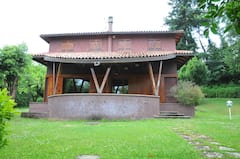You can’t see all that Rome has to offer in years, let alone in one summer. All the same, that doesn’t mean you shouldn’t make the most of your trip there! Rome is full of timeless grandeur and ancient history, and your trip should not be about trying to cram everything into your itinerary. Take your time to wander the city and try to wrap your head around the concept of how ancient the city is. For thousands of years Rome has been the meeting place of travellers from all over the world. It has seen empires, civilisations, and religions rise and fall. And now, here you are!
To get you started on your Roman adventure, here are 15 things to do in the Eternal City:
1. Toss a coin into the Trevi Fountain

Completed in 1762, the Fontana di Trevi is the largest and most intricate of Rome’s baroque fountains. It’s world famous, and thousands flock to the fountain every day to admire it. It commemorates the story of how a source of fresh water was found and channelled over 8 miles (12.9 kilometres) into the city. The fountain combines nature, sculpture, and architecture. To avoid the mad rush of tourists, try going in the early morning and take a moment to enjoy the sound of water that has been rushing for centuries. Don’t forget to bring a coin; legend has it that if you throw a coin in over your shoulder, you will return to Rome.
Read more about Rome’s fountains here.
Trevi Fountain
Address: Piazza di Trevi, 00187 Roma, Italy
Access: 7-minute walk from Barberini Station
2. Visit a talking statue

There are no shortage of statues in Rome, but some are so famous, they seem to have found their own voices. The talking statues of Rome, or the Congregation of Wits, were born in the 1500s when Rome was ruled by the Papacy. Anonymous criticisms of religious and civil authorities were posted on well-known statues, creating one of the earliest forms of a bulletin board.
The first and most famous of these statues is Pasquino, situated in Piazza Pasquino. Others include Babuino, found near the church of Saint Athanasius, and Madame Lucrezia, found on the corner of Piazza San Marco. As of the time of writing (July 2016) the statues have been cleaned up, but they’re still a fascinating facet of Rome’s history and relations between the authorities and the people.
Pasquino
Address: Piazza di Pasquino, 00186 Roma, Italy
Access: 12 minutes from Barberini Station via Bus 62
3. Buy a pass and skip the queues at the Colosseum, the Roman Forum, and Palatine Hill
Rome is popular. In peak seasons, like summer, you can expect to be queuing for hours to get into famous monuments like the Colosseum. If standing for hours in the summer heat isn’t how you want to spend the day, we recommend buying an advance ticket. You pay for a small booking fee, but you get to save time and make full use of your time in Rome. Another way to skip the queues is to buy your ticket at Palatine Hill instead. The ticket covers entrance to Palatine Hill, the Roman Forum, and the Colosseum, and queues are usually much shorter at Palatine Hill. Another way to skip the queues is to buy the Roma Pass and use that instead.
Here’s some quick information about the sites:
The Roman Forum
The Roman Forum was the teeming heart of ancient Rome, a meeting place for speeches, trials, processions, and everyday activities. It’s one of the most celebrated places in all of history. Today, it is a large ruin of architectural fragments and archaeological excavations.
You might be interested in these Airbnbs!
Palatine Hill
The hill is the centremost of the Seven Hills of Rome. Legend has it that the cave where Romulus and Remus were found by the she-wolf, Lupa, was on Palatine Hill. It has numerous archaeological sites.
The Colosseum
A large amphitheatre that was built by the emperors of Rome for gladiatorial shows and wild hunts, the Colosseum was the site of bloodthirsty and barbaric games in ancient times.
The Colosseum, Palatine Hill and the Roman Forum
Address: Piazza del Colosseo
Price: 12 EUR (13.20 USD) for adults, 7.50 EUR (8.30 USD) for members of the EU between 18 and 24 and free entrance for members of the EU below 18 and above 65.
Opening Hours: (ticket office closes one hour before closing time) from 8:30 am to one hour before sunset (exceptions: Good Friday 8:30 am - 2 pm, June 2 1:30 pm - 7:15 pm)
8:30 am - 4:30 pm from January 2 to February 15
8:30 am - 5 pm from February 16 to March 15
8:30 am - 5:30 pm from March 16 to last Saturday of March
8:30 am - 7:15 pm from last Sunday of March to August 31
8:30 am - 7 pm from September 1 to September 30
8:30 am - 6:30 pm from October 1 to last Sunday of October
8:30 am - 4:30 pm from the last Sunday of October to December 31
Access: 1-minute walk from Colosseo Station
Contact: +39 06 3996 7700
Website: CoopCulture
4. Escape the heat and join the dead on a tour of the Catacombs of St. Domitilla

The Catacombs of Rome were the early Christians’ solution to overcrowding and shortage of land. They’re famous mainly for Christian burials, but people of all Roman religions have been buried in them. The first burials took place in times as early as the 2nd Century AD.
Tours are offered for the various catacombs. The Catacombs of St. Domitilla are the oldest, and the only ones to still contain bones. They are also the best-preserved, and one of the largest such burial areas; the catacombs are spread out over an area of 9 miles (14.5 kilometres). You can only tour the catacombs with a guide. Groups of 10 are advised to book a tour beforehand on the official site of the Catacombs.
Catacombs of St. Domitilla
Address: Via delle Sette Chiese, 282, 00147 Roma, Italy
Price: 8 EUR (8.80 USD) for adults, 5 EUR (5.50 USD) for children aged 6 - 15
Opening Hours: 9 am - 12 noon, 2 pm - 5 pm. Closed on Tuesdays
Access: 18 minutes from Garbatella Station via bus 716
Contact: +39 06 511 0342
Website: Catacombe Domitilla
5. Cycle down the Appian Way

The Appian Way is one of the oldest and most important roads of Ancient Rome. Originally, it stretched 350 miles (563 kilometres) from Rome to Brindisi, a port town in the south of Italy. Building was completed in 312 BC, making the road over 2,000 years old.
Ten miles (16 kilometres) of the road have been preserved as a regional park, and you can rent bikes for around 3 EUR (3.30 USD) per hour. It’s a lovely place to while away an afternoon, cycling and enjoying the flocks of sheep wandering about. In the regional park, you can find ancient villas, ruins, and catacombs.
Appian Way Regional Park
Address: Via Appia Antica, 42, 00178 Roma, Italy
Price: Free, but bike rentals are around 3 EUR (3.30 USD) per hour
Opening Hours: 9:30 am - 5:30 pm
Access: Take bus 118 to the Info Point Appia Antica
Contact: +39 06 512 6314
Website: Appian Way Regional Park
6. Enjoy a gelato from the famous Giolitti
There’s nothing better than an icy scoop of creamy gelato to combat the heat of a Roman summer. Italy loves its gelato, and Rome has gelateria aplenty. One of the places where you can be assured of top quality is at the famous Giolitti, which is tucked away near the Italian Parliament. It’s the oldest ice cream parlour in Rome, and it’s been run by the same family since the 1900s. Some recommended flavours include pistachio and bacio (chocolate and hazelnut).
Giolitti
Address: Via degli Uffici del Vicario, 40, 00186 Roma, Italy
Opening Hours: 7 am - 1:30 am
Access: 13-minute walk from Spagna Station
Contact: +39 06 699 1243
Website: Giolitti
7. Order an espresso like a local

Forget about Starbucks. When in Rome, drink coffee as the Romans do. That means cappuccinos at breakfast, and espressos for the rest of the day. For an espresso, ask for un caffe. Macchiatos are un caffe macchiato. If the summer heat is proving to be too much, ask for un caffe freddo, which is basically cold espresso overloaded with sugar. Alternatively, you can ask for the Roman version of a frappucino – crema di caffe.
Coffee is integral to life in Rome, so it’s hard to find a café that doesn’t do the drink justice. However, some popular cafes include:
Antigua Tazza D’Oro Coffee House
Located outside the Pantheon, its coffee blend is made from eight Arabica varieties.
Address: 84 Via degli Orfan
Contact: +39 06 678 9792
Domiziano
Located right in the front of the Four River’s fountain, you can enjoy great coffee mixed with ingredients like alcohol, ice cream, and chocolate, along with the beautiful view of Bernini’s work.
Address: 88/89 Piazza Navona
Contact: +39 06 6880 6845
Rosati
Found at Piazza del Popolo, Rosati’s espresso is on-point, and it also has some amazing tiramisu.
Address: 4/5a Piazza del Popolo
Contact: +39 06 322 7378, +39 06 322 5859
8. Wander through the Campo de’ Fiori

Found in the Parione District, Campo de’ Fiori has been a meeting place for centuries. Today, you can stroll through a marketplace in the morning and admire the mounds of fresh produce. The fresh market has been held at Campo de’ Fiori daily since 1869. Previously, it was held at Piazza Navona. You can buy a fresh loaf and head over to the olive oil stands to sample what they have.
In the past, Campo de’ Fiori was also a bustling market and meeting place. A horse market was held twice weekly, and many of the surrounding streets were named for specific trades such as cross-bow making or hat making. Executions were also held here, one of the most prominent being the execution of Giordano Bruno. He was a philosopher who was burnt alive in 1600. Today, a monument stands in the exact spot of his death. You can enjoy your morning shopping with that cheery thought in mind.
Campo de' Fiori
Address: Piazza Campo de’ Fiori, 00186 Roma, Italy
Opening Hours: 7 am - 1:30 pm. Closed on Sundays
9. Get a panoramic shot of the city from Gianicolo at noon

Although not one of Rome’s famed Seven Hills, Gianicolo provides the highest point to see the city from. It’s an infamous spot for Rome’s couples to make out in the evening, so to avoid an awkward situation, head over at noon. You’ll get to see the beautiful sight of central Rome’s bell towers and domes.
You’ll also get to hear the daily firing of the cannon there; it’s a time signal that was meant to signal midday to the surrounding belltowers so they could ring the bells. The tradition has been around since 1847.
Gianicolo
Address: Via di S. Francesco di Sales, 18, 00165 Roma, Italy
10. Cool off in the sea at Ostia Antica

After a few days of walking around in Rome’s hot summer weather, you’ll probably be yearning for a cooling swim. Before you decide to take a dip in one of Rome’s fountains, how about a day trip to Ostia? Ostia is the nearest beach town to Rome, and while you might not find picture-perfect Italian beaches there, you’ll still get clean water and long sandy stretches perfect for a day in the water. It’s a popular vacation site for many Romans. The beaches are free, but you can also pay a fee to use one of the private club’s beaches.
Besides swimming, you can also visit the ruins of Ostia Antica, the port city of Ancient Rome.
Ostia
Access: Take Metro Line B to Piramide Stop, then take the Ostia Lido Train towards Cristoforo Colombo. For private beaches, get off at Ostia Lido Centro or Ostia Stella Polare. For public beaches, take the train to Cristoforo Colombo, then take Bus 7 to Cancelli.
11. Send a postcard from the Vatican City

Rome is the only city in the world that also has a country in it. The Vatican City is an independent country, but it is located within the boundaries of Rome. While you won’t need to bring your passport to visit St. Peter’s Square, the Vatican holds itself apart from Rome in a variety of ways. The most notable is their postage system. The Vatican issues its own stamps, and post sent from the Vatican has been noted to reach its destination before post sent from Rome. You can test this out yourself – send someone back home some postcards and see which one gets there first. You also get some cool stamps in the process.
Vatican Post Office
Address: Via di Porta Angelica, 00120 Città del Vaticano, Vatican City
Opening Hours: 1 July - 31 August, Mondays to Saturdays 8 am - 2 pm. 1 September - 31 June, Mondays to Friday 8 am - 6.45 pm, Saturdays 8 am - 2 pm
Access: 10-minute walk from Ottaviano
Contact: +39 06 69890400
Website: Vatican Post Office
12. Cuddle cats at the scene of Caesar’s murder
Cats, cuddles and … murder?! Welcome to the ruins of Torre Argentina. It’s an archaeological site that contains the remains of four Republican Temples and Pompey’s Theatre. It’s believed to be the site where Julius Caesar was assassinated. Roman cats have always found shelter amongst the city’s ruins, and Torre Argentina was no exception. Today, a shelter houses 150 cats. Visitors are welcome to drop by and visit the cats and the cat shop.
Torre Argentina Cat Sanctuary
Address: Largo di Torre Argentina, corner of Via Florida & Via di Torre Argentina
Opening Hours: Noon to 6 pm
Contact: + 39 06 68805611
Website: Torre Argentina Cat Sanctuary
13. Be a cliché and go on a night Vespa tour (from USD 198.0)

Zooming through Rome’s streets at dusk on a Vespa sounds like something out of a clichéd European film … but, let’s be real here, we would all do it in a heartbeat. Well, it turns out you can!
Viator offers a private Vespa tour of Rome by night. You’ll be accompanied by a local guide who will keep you safe and guide you through the city. Along the tour, you’ll visit attractions such as the Pantheon and the Colosseum, but you’ll also get to see hidden views of Rome as you buzz through alleyways and streets. You’ll also learn about Rome’s history from your guide during the ride.
This is a fun and unique way to experience Rome. You get to feel like local and see a different side of Rome as the sun sets. Do note that you have to be above 21 to drive a Vespa, and you must have a valid driving license. If not, you can take a backseat and just enjoy the view.
Private Rome by Night Vespa Tour
Duration: 3 hours
14. Go to church, beat the heat, and admire the art
Rome is predominantly Catholic, and for centuries it has been the home of the Roman Catholic Church and the Pope (head of the Catholic Church). There are around 900 churches in Rome, and many of them are centuries-old and have some fabulous art and architecture. Thankfully, you don’t have to visit all 900 to get your art fix, and you don’t have to be Catholic to admire the churches. Here are three churches that are amazing works of art, architecture, and history:
Basilica of Santa Maria del Popolo
The Basilica of Santa Maria del Popolo has a rather interesting origin story. It was built in 1099 because supposedly evil-looking crows lived in a tree near the North Gate of Rome. Residents believed that the ghost of Nero was haunting the area, so the tree was chopped down and the church was built. It’s said to contain the best examples of works by Renaissance artists such as Raphael, Bernini, and Caravaggio.
Basilica of Santa Maria del Popolo
Address: Piazza del Popolo, 12, 00187 Roma, Italy
Santa Maria Sopra Minerva
Santa Maria Sopra Minerva is said to be the only remaining example of a Gothic church in Rome. You might be wondering why Minerva is in the name, seeing as Minerva was an ancient Roman goddess. The church stands on the site that was once a temple to the Egyptian goddess Isis, but at the time of building (1370) it was thought to be to the goddess Minerva. Inside, you can find 15th-century frescos and a statue by Michelangelo.
Santa Maria Sopra Minerva
Address: Piazza della Minerva, 42, 00186 Roma, Italy
Tip from tour guide


This church sits in Piazza della Minerva, a historic spot that hosts the smallest of the city's 13 ancient obelisks. Made of Egyptian red granite, the obelisk towers on top of Bernini's iconic elephant statue, a masterpiece created in 1667. The original structure dates back to 580 BCE during the reign of Pharaoh Apries and was transported to Rome in the 1st century CE. It was discovered in 1665.
Basilica di Santa Maria Maggiore
The Basilica di Santa Maria Maggiore is considered to be a crown jewel of the Catholic churches of Rome. It’s filled to the brim with religious history. Every stained glass window, column, and fresco has some kind of religious history attached to it. Aside from the church itself, there are also many artifacts that represent the Christian art civilization.
Basilica di Santa Maria Maggiore
Address: Piazza di S. Maria Maggiore, 42, 00100 Roma RM, Italy
15. Contemplate mortality at the Capuchin Crypt

The Capuchin Crypt is sure to send chills down your spine, but not for the reasons you might imagine. The Crypt holds the bones of some 4,000 Capuchin monks, and the bones are arranged decoratively around five of the Crypt’s six chambers. The displays are not meant to be macabre; they’re meant to represent our mortality and the swift passage of life on Earth. As a sign in one of the chambers aptly puts it, ‘What you are now, we used to be. What we are now, you will be.’
It’s shiveringly beautiful and heartbreaking at the same time.
Capuchin Crypt
Address: Via Vittorio Veneto, 27, 00187 Roma, Italy
Price: About 6 EUR (6.60 USD)
Opening Hours: 9 am - 7 pm
Contact: +39 06 8880 3675
Make some eternal memories
From great food to fantastic architecture and sobering monuments, Rome has no shortage of things to offer. It’s fascinating to think about all that the streets and buildings have seen and experienced through the passage of time. Your Roman summer is barely a blink in the city’s eye, so don’t feel overwhelmed by everything that there is to see and do. Toss a coin in the Trevi Fountain, and when you do find your way back, Rome will still be there waiting for you!
History
Get Trip101 in your inbox
Unsubscribe in one click. See our Privacy Policy for more information on how we use your data
































Create an account to